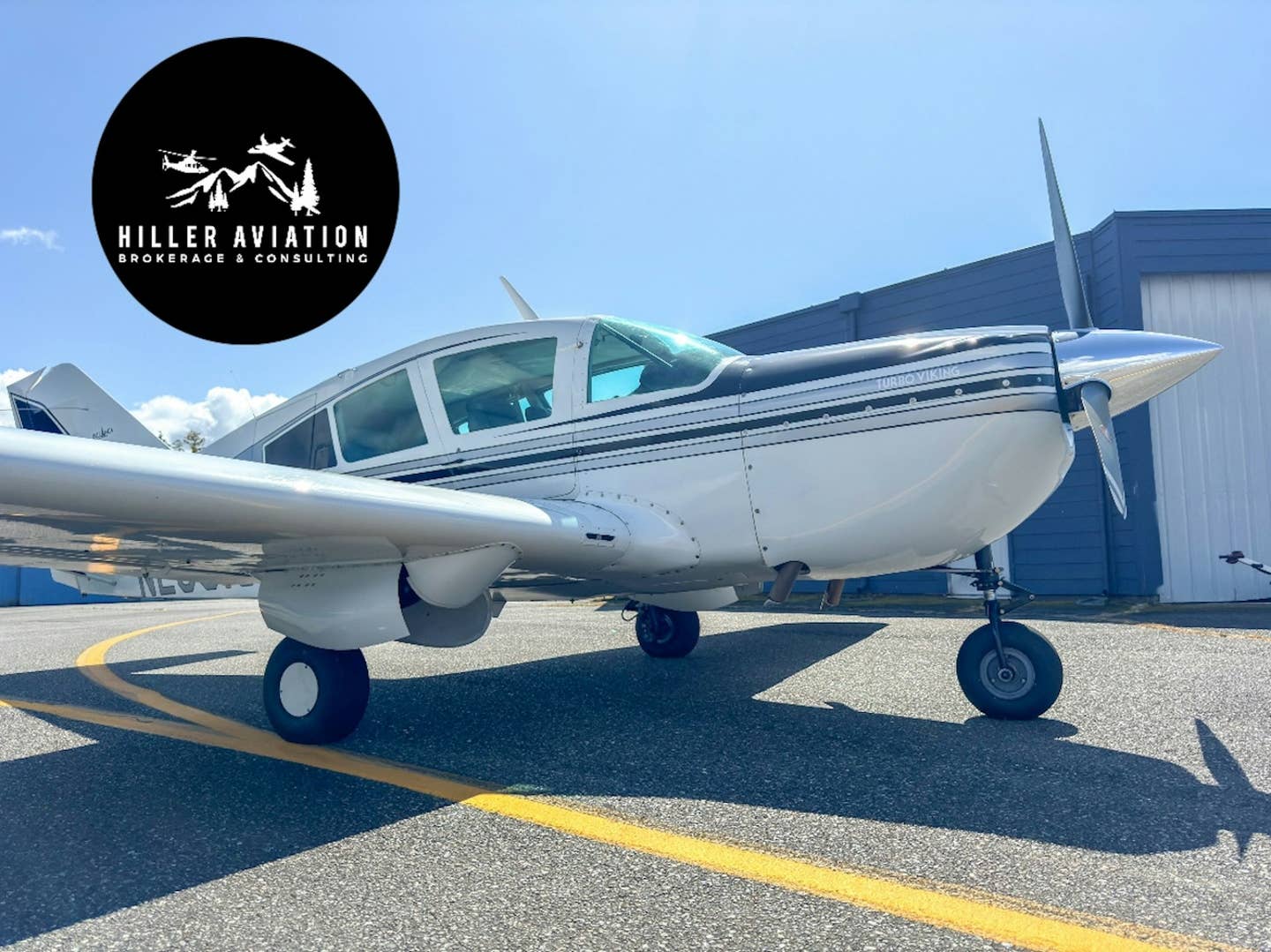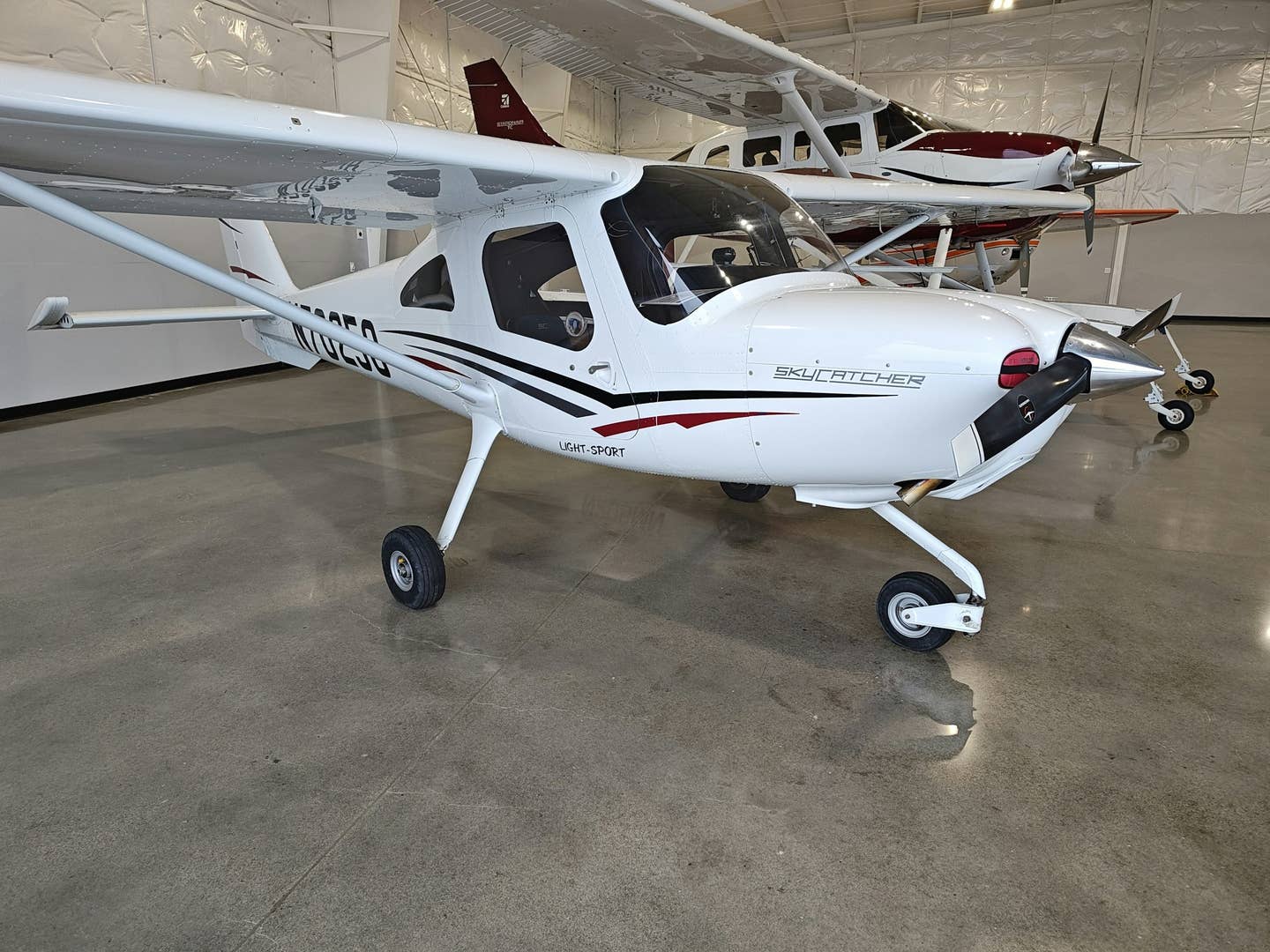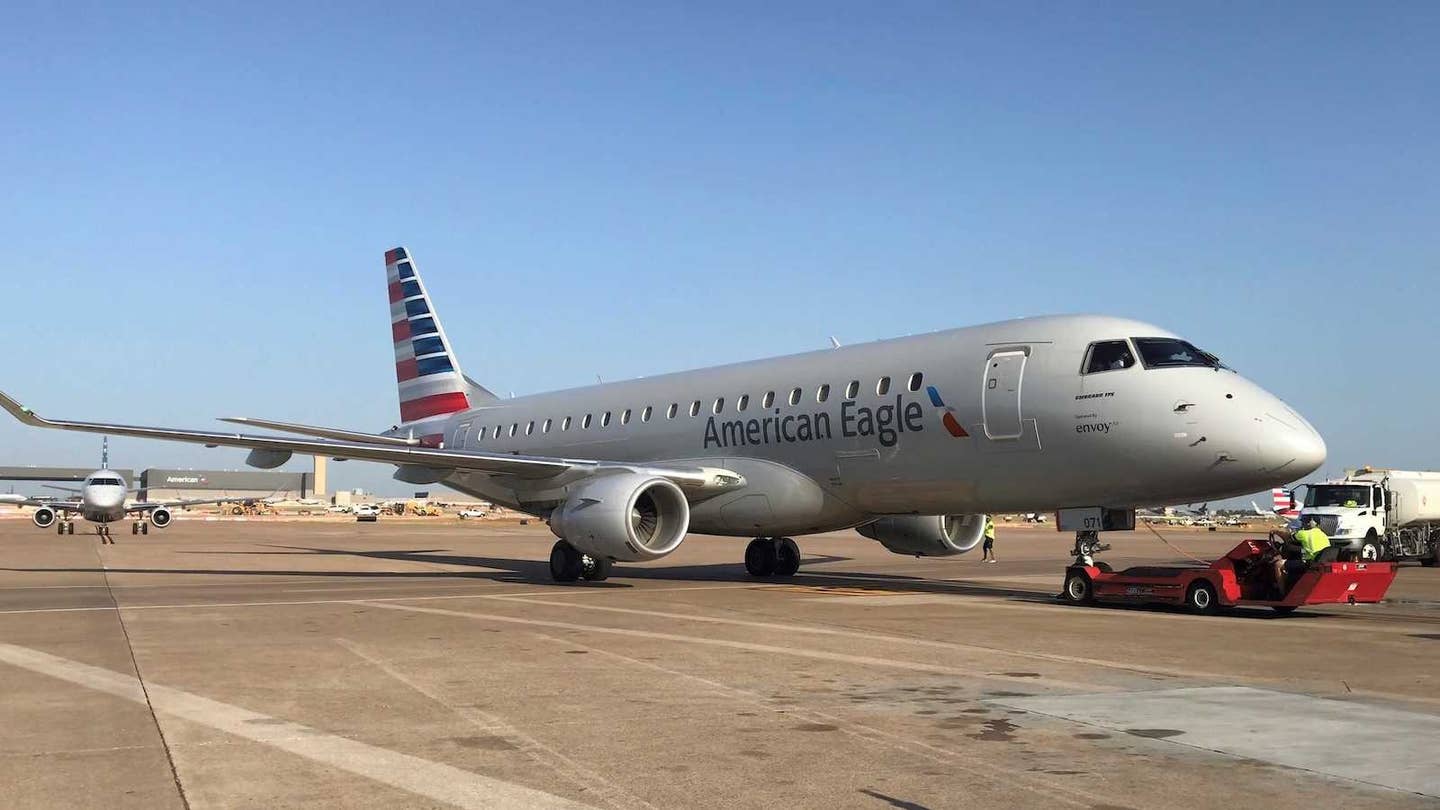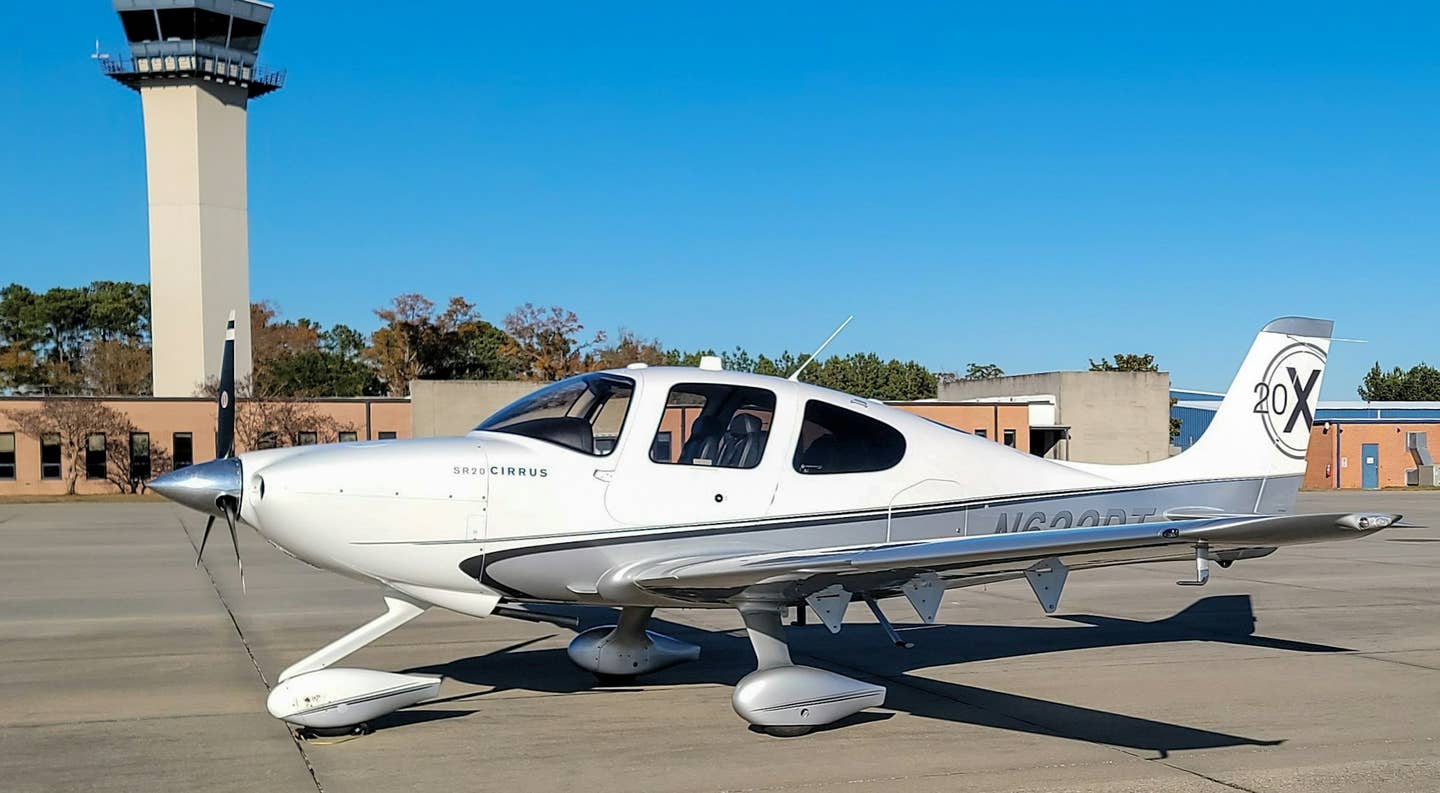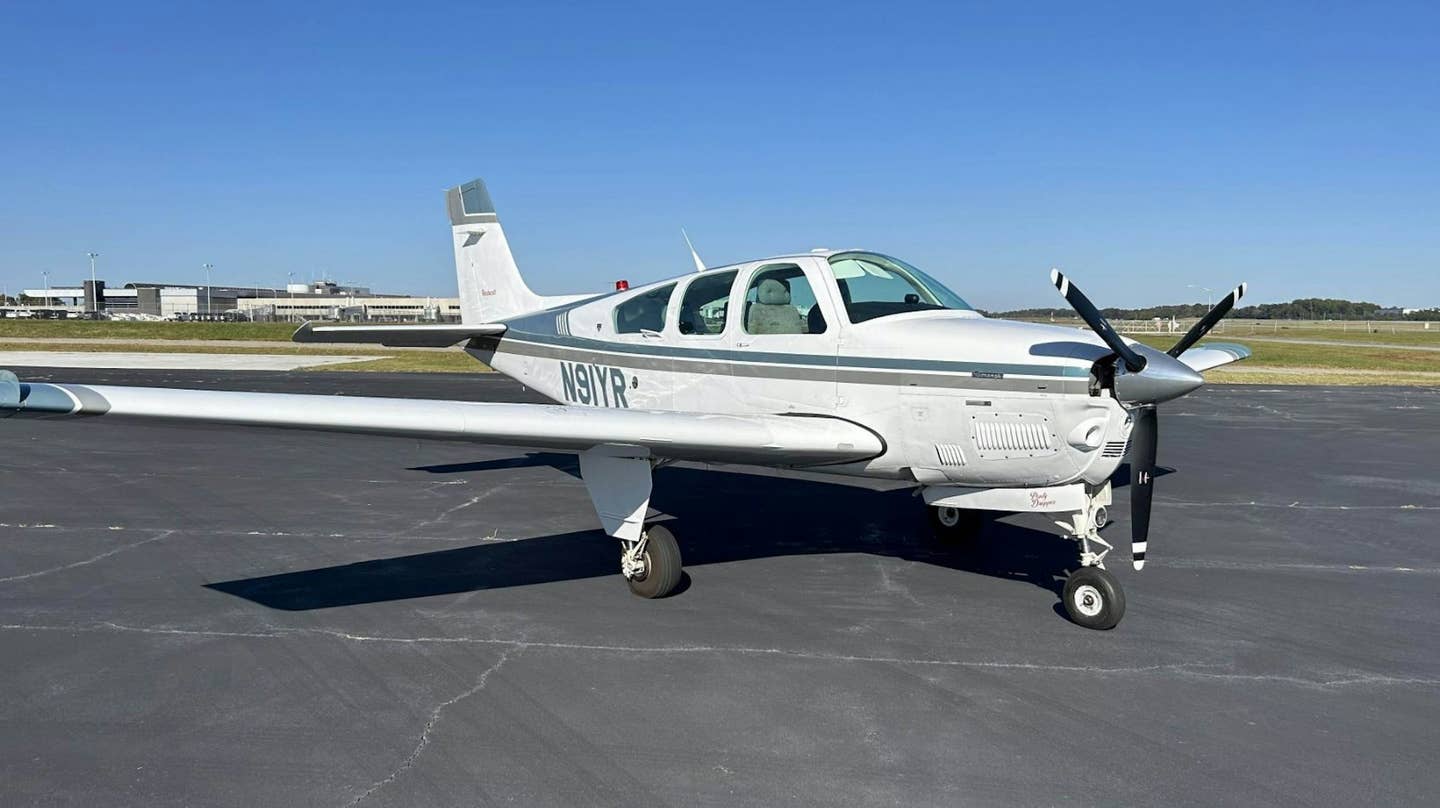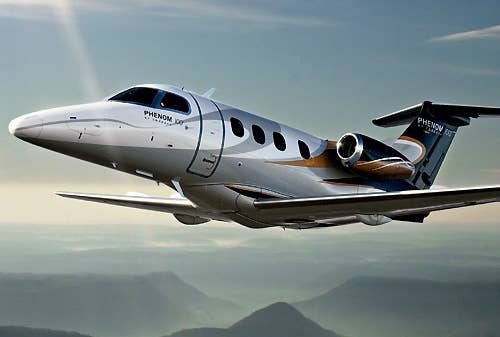
Embraer Phenom 100
The entire normal operating checklist for the new Embraer Phenom 100 light business jet fits on both sides of a laminated card that you can slide into a shirt pocket. While other business jets need giant spiral-bound pages upon pages to go through before liftoff, the Phenom is designed to cut pilot workload to a minimum so there is time to focus on the overall situation while the airplane and its systems take care of themselves.
The Phenom 100 is Embraer's first from-scratch business jet, and its design reflects what the company has learned from building its very successful RJ series regional jets, and now its E-Jets in the 170 and 190 series that compete with the Boeing 737 and Airbus A320 family. The airlines demand automated and simplified systems, rugged construction, and the ability to fix failures quickly when they do occur. And you can instantly see that philosophy designed into the Phenom.
For example, the Phenom has no avionics master switch. Amazing. But if you think for a moment, why do you need an avionics master? There are no conventional gauges or instruments to look at, so the three big displays of the Garmin system that Embraer calls Prodigy must be up and working to know anything about the status of the airplane. So the entire Prodigy system comes on with the battery switches. But I still think it would be very difficult for business jet makers to make such a leap without the experience of designing a modern airline jet.
The same "if you don't need it, don't include it" philosophy prevails in the rest of the Phenom 100 cockpit. The pre-start checklist is pretty much turn on the two batteries and then rotate one of the engine control knobs to start. When the first engine starter engages, the flashing beacon -- the universal signal of engine start and operation -- automatically turns on, and stays on until the last engine is shut down. The fuel pumps, the generators and the pressurization system simply stay in the automatic mode and check themselves with no need for a separate test routine.
Embraer says the Phenom has 70 percent fewer actions on its checklist than other light jets, but it seems to me that the reduction in required steps is even greater. Some traditionalists will say that Embraer has taken the pilot out of the loop with so much simplification and automation, and I agree. But I would use the word "relieved" the pilot of the mindless and time-consuming chores of switch flipping and gauge reading when those binary tasks are what electronic systems and monitors do best. With those multiple checking steps eliminated, the pilot can focus on the critical issues, such as do I have the correct clearance, am I on the right taxiway, is this the assigned runway, and all of the other complex aspects of flying that only a human can do.
The Phenom 100 is approved for single pilot flight so the cockpit automation is even more important. Embraer's customer information indicates about 20 percent of the jets will be flown by their owners and, as with other light jets, many of those will be stepping up with little or no jet experience.
Embraer has placed the Phenom 100 right in the middle of entry-level business jets with its price tag of approximately $3.5 million. The Phenom cabin is bigger than the less costly Cessna Mustang, and very close in size to the more expensive Citation CJ1+. The Phenom's 390-knot top cruise speed is a tad faster than the CJ1+. And the maximum range of all three jets is over 1,100 nm, and in each jet the achievable range is highly dependent on the ability to climb directly to the airplane's ceiling of 41,000 feet. If air traffic control delays climb, or sends you down far from the destination, as is common in many parts of the United States, range will fall off dramatically.
In addition to its advanced cockpit and simplified systems, Embraer concentrated on cabin comfort in the Phenom 100. The airplane has what the company calls an Oval Lite cabin cross section with the lower half of the fuselage tube pushed out instead of wrapping around in a constant radius as is the norm in pressurized cabins. The wider lower half of the cabin means your feet rest directly in front of you instead of being pushed in toward the center by the curving fuselage wall. The design provides space for a wide seat with plenty of room for your outboard shoulder and head to remain clear of the cabin wall. The design adds virtually nothing to the overall drag because the expanded part of the cabin blends into the wing-body fairing that needs to be there in any case.
The cabin has just 1 inch under 5-foot headroom from the dropped aisle, and is 1 inch over 5 feet wide at your elbow when seated. That is bigger than both of its Citation competitors and also more roomy than the Beech King Air cabin, which has long been a benchmark of light business airplane comfort.
Like all recently designed business jets, the Phenom fuselage sits atop the wing so no wing structure intrudes on the cabin. The wing is a unique Embraer design that combines both good low-speed characteristics and an airfoil shape that delays critical Mach to a speed above the Mach .70 maximum of the airplane. That means air accelerating to flow over the wing does not reach Mach 1 and the high drag that creates. It also means the Phenom gains very little in efficiency and range when slowing down from high-speed cruise because even at max cruise the wing is operating with low drag.
The wing flaps are very long in span, and extend far aft on tracks before deflecting down so they add a great deal of area to the wing, and open a large slot to promote smooth airflow at high angles of attack. During flight testing the company found that two wing fences on each side improved low speed lift. The fences -- sometimes called stall fences -- help to prevent spanwise airflow at high angles of attack by physically blocking the slipstream and forcing it back over the wing. Fences were once common on business jet wings, but more recently vortex generators that create a high energy wake have been used to accomplish the same goal. Embraer experimented with several styles of vortex generator devices but found the tried and true fence delivered the greatest improvement for the least weight and drag.
The Phenom 100 meets or exceeds all design goals set when the program was announced in 2005, including an increase in baggage space to a cavernous 55 cubic feet in the tailcone. It turned out that the systems required less than anticipated space so there is more room for baggage. Enough room to carry two sets of full-length skis, plus four garment bags, four roll-on suitcases and four laptop cases.
The airplane sits pretty high on its trailing-link main landing gear and the T-tail is way up there at more than 14 feet above the ramp. The horizontal tail is fixed, and dual trim tabs are used for pitch trim. The engines are also located high on the fuselage to keep them up and away from the accelerated air flowing over the wing. The fuselage inboard of the nacelles is hallowed out according to the "area rule" to reduce drag. The high engine location makes it easy to load and unload the baggage compartment without a lot of stooping and bending, but a large and easy to read sight gauge makes checking the engine oil a snap without need for a ladder.
To account for the high stance, and to ease passenger access, the Phenom has a big jet-style airstair door. The airstair has integral steps, of course, and even a handrail, something not seen in light jets. Opening and closing the door from inside or out is a simple one lever throw process, and a well-done spring balance system makes it easy to raise or lower the door.
The forward fuselage and canopy flow smoothly with full-time electrically heated windshields blending in. The shape no doubt contributes to the low noise of the cockpit. The windshield design also allows it to be replaced entirely from the outside in an hour with no need for special tools or curing of sealants. In fact, all components and sensors such as the stall warning, pitot-static, standby electric fuel pumps, and so on can be removed and replaced from outside the airplane with no special tools.
The entire airplane looks rugged, and it is with a design life of 35,000 hours or flight cycles, a number it would take a very active business jet flier 70 years to reach. And the design philosophy which follows the best practices that have flowed from the airline industry gives the Phenom 100 an inspection interval of 600 hours or 12 months. There are no other maintenance phases, or steps, to deal with in between, which is remarkable in any turbine business airplane. A central maintenance computer tracks and records all faults in flight. Embraer plans for the computer to actually radio link maintenance reports to its service centers while the Phenom is still in flight so the shop can prepare to replace the failed items when it lands. And in keeping with the quiet and dark cockpit philosophy, the maintenance computer does not intrude on the pilots with messages about problems that they can do nothing about in flight.
The Phenom cockpit is as roomy as any light business jet and more spacious than some. The crew seats are comfortable with a good range of adjustments. The instrument panel is uncluttered and has only a fraction of the switches and knobs of many jets. Switches are mounted in thick, sturdy panels that are fastened to the instrument panel by quick release screws. If a switch fails, the whole subpanel it is mounted in can be replaced in a couple minutes.
The three Garmin Prodigy flat-panel displays are identical and can be swapped out with nothing more than a simple screwdriver. All of the airplane configuration data is stored outside the display panels, so any panel can plug into any spot in any Phenom. You can even dispatch with one display failed. If it is the pilot's PFD or the center MFD that fails, you simply move the display from the right side into position and takeoff with full capability.
The redundancy designed into the Prodigy system is amazing for a light jet. There is dual everything in terms of sensors, of course, but what I haven't seen before is the battery-powered emergency backup flight instrument tied into the main system. The Phenom has an all-electronic standby instrument mounted in the glareshield, which is common in larger jets, but not all light jets. The instrument contains independent electronic gyro and air data sensors to provide all necessary IFR flight instrumentation should all aircraft power somehow be lost. But what is unusual is that if the electronic gyros in the main Prodigy system fail, the information from the standby can be displayed on the main PFD. All systems allow pilots to select the remaining sensors from the other side after a failure, but this is the first I have seen that includes the standby in the backup loop.
The Phenom that I got to fly was the first production airplane that had been brought up to conformity, except that it did not have a full interior and was still instrumented for continued development. The airplane had flown about half of the 1,200 flight hours used in testing for certification. On top of that Embraer flew Phenoms for another 600 hours to test for maturity.
Because of the test equipment the airplane weighed more empty than a completed model, but with 2,200 pounds of a maximum 2,804 pounds of fuel, and four people on board, ramp weight was 10,400 pounds, close to the 10,516-pound maximum. Embraer developed the Phenom using kilograms, which are in mostly round numbers but become odd when converted to pounds. We were at Embraer's flight test center and Phenom assembly plant at Gaviao Peixoto, Brazil, where the elevation is 2,000 feet, and it was summer with an air temperature of 26° C. Despite the hot and high conditions, and near maximum weight, the required balanced field runway was just 3,036 feet. Decision speed was 103 knots, rotation at 105, and engine-out climb speed at 108 with flaps set at the first of two available takeoff settings.
The Phenom has what Embraer calls Automatic Thrust Reserve that commands, through the engine fadec controls, an extra 5 to 7 percent thrust on the operating engine if the other one fails. This feature is typically called Automatic Power Reserve and has been used in several business jets to improve the engine-out climb gradient. If a Phenom pilot encounters an emergency with both engines operating -- wind shear, for example -- he can push the throttle levers against a soft stop and get the ATR power on both engines for up to 10 minutes with no engine damage or required inspection. This ATR feature helps bring standard day, maximum weight runway down from the predicted 3,400 feet to 3,125 feet.
After the few seconds it takes to note that the few system switches are in their "auto" position, and the single knob twist required for engine start, the only other pre-taxi checks are to push a button and make sure the few annunciator lights work, which also checks the monitors, and to conduct a stall warning stick-pusher system test. This is also a one button press.
The Prodigy system operates much like other G1000 installations, and you can load data and set frequencies using the knobs on the sides of the display, or a keyboard mounted up and ahead of the throttles. It is also possible to make graphical data entries by moving the cursor over a fix on the map. The system also has synoptic pages to show status of the systems and various doors on the airplane. A crew advisory system (CAS) shows any messages in plain language on the MFD and there is also a takeoff configuration warning system. If flaps or trim are not set for takeoff, or the parking brake is on, you get a warning if you advance the power. This is the norm on larger jets, but again, uncommon on light jets.
The Prodigy system has the array of moving maps, approach and taxi charts and satellite weather capability that we have come to expect in a modern cockpit. Garmin's synthetic vision technology (SVT) should be available in the Phenom by summer.
The Phenom 100 has brake-by-wire so when you press the pedals an electrical signal is sent to valves outside the cockpit that meter hydraulic pressure to the brakes. Some earlier brake-by-wire systems had their problems with grabbing, or chattering at taxi speeds, but the system in the Phenom works just right. When you press the pedals you are pressing against a spring, and I think the spring came right out of Embraer's airliners because it has a heavy feel for a light jet. But you will find it very easy to control the speed of the airplane smoothly the first time out. Nosewheel steering is mechanical and also natural to use the very first time. To make sharp turns, pressure on the brake and a little asymmetric power kicks the nosewheel over beyond its normal travel.
I can't describe the initial sensation of flying the Phenom 100 better than to say it feels natural. The Embraer trademark ram's horn wheel is in just the right place, the throttles are just right, and the positive nosewheel steering makes a no-swerve takeoff feel natural the very first time. The stick forces are a little higher than you may expect in a light jet, but easily handled. It takes around 30 pounds of pull to rotate, and the ailerons have a matched level of force for good harmony. I'm happy to say that the pitch trim runs quickly so a few blips of the switch under your thumb cancel any stick force during maneuvering or configuration change. The flight controls are entirely mechanical.
Like the other light jets the Phenom 100 is not going to blow you away with its climb rates. Initial climb at our weight and warm temperatures was around 1,200 to 1,500 fpm. The normal climb speed is 200 knots indicated, which helps the airplane fit in with other jet traffic, and at that speed we climbed unrestricted to 24,000 feet in 17 minutes despite air temperatures 14° C above standard. The Phenom does not have detents in its throttle quadrant to feel for power settings but instead has bold white lines on the levers that you match to marks on the quadrant. So, after takeoff and acceleration, you move the levers back so the lines match the maximum continuous/climb mark and leave them there. The fadec computers make all adjustments and synchronize the N1 fan speeds perfectly. All engine and system information is displayed on the MFD with colors used to alert to any abnormality. When things are normal, all is green on the display, and the system is quiet.
The air temperature remained about 15° C above standard as we reached 30,000 feet in 25 minutes, and transitioned to Mach .55 for climb speed. It took 34 minutes from liftoff to level at FL 350 after burning 625 pounds of fuel. The air temp was still way above standard but at maximum cruise power the Phenom accelerated to Mach .61 for a true airspeed of 360 knots burning 704 pph of fuel. At standard air temperature Embraer shows about 380 knots true at that level with, of course, more fuel flow, and that seems to be accurate, though there was no standard temperature air available that day to check. To achieve the maximum range we would have needed to continue the climb to FL 410 where fuel flow would have been about 200 pph less.
I also tried the long-range cruise power setting at FL 350, which brought cruise speed down to 338 knots true with 661 pph fuel flow. The specific range -- nautical mile per pound of fuel per hour -- was exactly the same at 0.511 at both power settings. The Phenom 100 wing is obviously so low in drag at its design airspeeds that there will be little or no incentive to cruise a reduced thrust.
The Garmin Prodigy system has a new feature, cruise speed control (CSC). When engaged CSC will command the engine fadecs within an operating range to hold the selected cruise speed as fuel weight burns off, or air temperatures change. Garmin and Embraer are working to expand this capability and hope, at some point in the future, to have an approach speed hold mode. Such a system would be like an autothrottle, but would operate during final approach and automatically maintain VREF or a higher speed if turbulence, wind or ATC require. This would be another first in light jets.
The Phenom is very stable at high-cruise altitude with wide margins for turbulence or maneuvering. I rolled the airplane into a 60-degree bank and pulled hard until the G-meter in the test equipment topped 2 Gs, and there was no buffet or other complaint from the airplane. The Phenom does not have speedbrakes so the drill for an emergency descent is to extend the landing gear and accelerate to the Mach and then airspeed red lines. I didn't try this maneuver, but with power at idle and the nose down to reach red line airspeed the descent rate was about 7,000 fpm, so I'm sure the drag of the landing gear would easily increase the descent to more than 10,000 fpm.
Down at 15,000 feet I tried level, steep turns and other maneuvering and the Phenom response is predictable and easy to control. The airplane, like most larger jets, has a stall barrier system to prevent an actual aerodynamic stall. As the stalling angle of attack is approached the airspeed indicator changes color, flashes and a voice calls "stall." If you continue to increase the alpha a stick pusher automatically activates, lowering the nose before the aerodynamic stall. Unlike some pushers that shove the nose way down, the one in the Phenom leaves you with a natural looking stall recovery attitude so you can add power and raise the nose for a very small loss of altitude.
Stick pushers add some weight, cost and complexity, and increase runway requirements at least a little because they must always function ahead of the actual stall, and stall speed is the basis for takeoff and landing calculations. However, a pusher is a good thing when testing for flight in icing because it prevents the actual stall. The Phenom has silver pneumatic boots on the wings and horizontal tail for ice removal and the ice that remains after boot activation, or accumulates between the automatic inflation cycles, could cause problems at the stall. But with a pusher, that's not an issue.
The Phenom 100 is a delight to fly in the terminal area. Flap and gear extension speeds are high so the airplane fits in well with other jet traffic. The Pratt engines are very responsive so speed control is easy. VREF final approach speeds are close to 100 knots, but to long runways at busy airports you can fly faster without a lot of float over the runway. And on approach the Phenom is in a very natural attitude that requires nothing more than bringing the power to idle and very slightly raising the nose to make a great landing on the long stroke trailing-link gear.
On my last landing in the airplane I went for a maximum effort stop. I cut the power a little higher for a firmer touchdown, and with maximum braking, which takes a very strong push on the pedals, the Phenom stopped in under 1,500 ground roll. The antiskid brake logic is very aggressive but I had no difficulty maintaining the center line as the system cycled the brakes to prevent wheel lock.
During one takeoff Embraer test pilot Clodoaldo Matias de Oliveira cut the right engine at V1 decision speed. The rudder is so effective and the force so manageable that I actually pushed the slip-skid indicator out the right side with too much left rudder. The wings stayed level with no aileron input, and the traffic pattern trip and engine-out approach and landing felt totally natural, like I had been flying the airplane for years instead of a couple hours.
Though I didn't have a chance to fly a Phenom with complete interior, I did spend time in an airplane just being readied for delivery and the cabin is impressive. The materials and quality of workmanship is first rate, and there are many comfort and convenience features developed by BMW Designworks that created the cabin design. The environmental system is divided in two with separate temperature controls for both cockpit and cabin. And the potty in the aft of the cabin is both usable in size and private.
Another comfort feature of the Phenom -- and this is a psychological comfort -- are the big cabin windows. The area of each cabin window is larger than other light jets, and even bigger than those in many midsize jets. The windows are mounted above the center of the fuselage so you can see out without bending, and the available natural light greatly adds to the sensation of space and comfort. Even the potty has a window on each side.
Though Embraer has enjoyed success in the airline market, supporting light business jets is a different mission, and the company has made that its number one goal. Embraer has three factory-owned service centers in Florida, Connecticut and Arizona up and working, and eight other major independent jet service centers authorized to do maintenance. There are also several international service centers, and the company offers fixed by the hour maintenance cost plans for the entire airplane, and Pratt & Whitney does the same for the engines. Training is at CAE in Dallas through a simulator program owned jointly by Embraer and CAE. Embraer feels so strongly about training that it has invested in the program rather than simply authorizing CAE.
Embraer has more than 800 orders for the Phenom 100 and the larger 300 model that is now in flight test and expected to be delivered late this year. The company doesn't break out order numbers for each model, but says the backlog for the 100 is around four years. The production schedule for 100s this year is 125 airplanes, but that all depends, of course, on the state of the global economy. All of the Phenom 100s until the fall of this year are destined for U.S. customers.
Many airplanes over the years have been called mini airliners, or personal airliners, but the Phenom 100 comes closest to that description yet. The simplified systems and operation, the long maintenance interval with ease of repair design, and the robust construction of the airplane are all lessons learned by Embraer out on the line. But the Phenom 100 also has the right size, performance and cost to compete head on with other light jets. Embraer is a high-tech company using the latest computer design and manufacturing tools, and it has brought all of those resources to bear on the creation of the Phenom, and the several more business jet models it now has in development. I think the airline experience it brings to its business jets will help make all business flying better.

Sign-up for newsletters & special offers!
Get the latest FLYING stories & special offers delivered directly to your inbox

